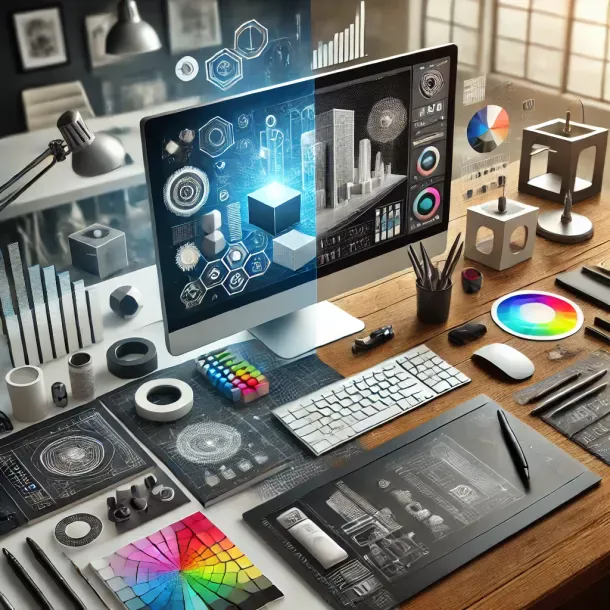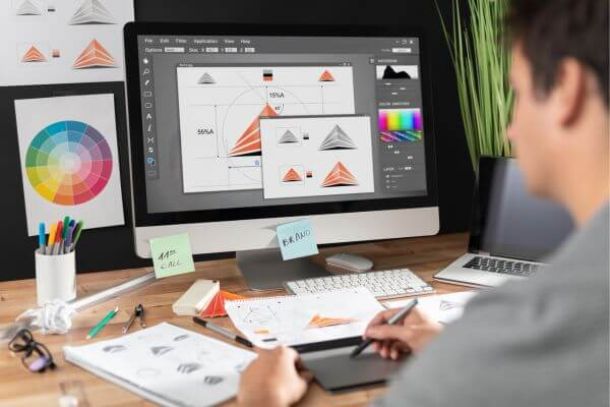Design 101: Essential Fundamentals for Beginner Designers
Design 101: Essential Fundamentals for Beginner Designers
Design is a powerful and creative field that plays a vital role in shaping the visual world around us. For aspiring designers embarking on their journey, understanding the essential fundamentals is crucial to building a strong foundation. In this article, we will explore the core principles and concepts that form the backbone of design. Whether you’re interested in graphic design, web design, or any other design discipline, these fundamentals will guide you towards creating compelling and effective designs.
Understanding Design
Design is the process of creating intentional solutions that fulfill a specific purpose or solve a problem. It encompasses various disciplines, including graphic design, industrial design, user interface design, and more. At its core, design involves combining form and function to communicate ideas visually.
Elements of Design
The elements of design are the building blocks that designers use to create their work. These elements include:
- Line: Lines are used to create shapes, define boundaries, and guide the viewer’s eye.
- Shape: Shapes are two-dimensional objects with defined boundaries, such as squares, circles, and triangles.
- Color: Color evokes emotions, sets a mood, and creates visual interest. Understanding color theory and the psychology of colors is essential.
- Typography: Typography refers to the art and technique of arranging typefaces. Choosing the right fonts and arranging them effectively is crucial for legibility and aesthetics.
- Texture: Texture adds depth and tactile qualities to designs. It can be visual or tactile, creating a sense of realism or enhancing the visual appeal.
- Space: Space refers to the area within a design. Effective use of space helps create balance, hierarchy, and visual clarity.
Principles of Design
Design principles guide the arrangement and organization of the elements. Some key principles include:
- Balance: Achieving visual equilibrium by distributing elements harmoniously.
- Contrast: Creating a visual impact by juxtaposing elements with significant differences.
- Hierarchy: Organizing elements based on their importance to guide the viewer’s attention.
- Proximity: Grouping related elements together to establish relationships and improve readability.
- Repetition: Reusing visual elements to create unity and consistency within a design.
- Alignment: Ensuring that elements are visually connected by their edges or centers.
- White Space: Utilizing empty space intentionally to give designs breathing room and enhance clarity.
- User-Centered Design:
Design is not just about aesthetics but also about solving problems for users. User-centered design focuses on creating designs that are intuitive, accessible, and user-friendly. Understanding the target audience, conducting user research, and incorporating user feedback are essential aspects of this approach.
Design Process
A structured design process helps designers approach projects systematically. It typically involves stages like research, ideation, sketching, wireframing, prototyping, and testing. Following a process ensures that designers address client requirements, consider user needs, and iterate on their designs effectively.
Tools and Software
Designers utilize various tools and software to bring their ideas to life. Depending on the design discipline, popular software includes Adobe Photoshop, Illustrator, Sketch, Figma, and more. It’s essential to learn these tools and understand their capabilities to execute designs efficiently.
The Importance of Inspiration and Feedback
Designers should seek inspiration from various sources, such as design blogs, books, art galleries, and nature. Additionally, actively seeking feedback from peers, mentors, and clients helps designers refine their work and grow their skills.
Composition and Layout
Creating a well-composed design is crucial for visual communication. Consider the overall layout and how elements are arranged within the design space. Pay attention to factors such as balance, visual flow, and focal points. Experiment with different compositions, grid systems, and design frameworks to achieve a harmonious and visually pleasing arrangement.
Understanding Color Theory
Color plays a vital role in design, evoking emotions, setting moods, and conveying messages. Familiarize yourself with color theory, which explores the relationships between colors and their psychological impact. Learn about color schemes, such as complementary, analogous, and monochromatic, and understand how to create visual harmony and contrast with color combinations.
Effective Typography
Typography is an essential aspect of design, as it enhances readability and communicates messages effectively. Learn about different typefaces, their characteristics, and how to choose appropriate fonts for different design contexts. Consider factors such as legibility, hierarchy, and the overall aesthetic appeal of your typography choices.
Visual Hierarchy
Establishing a clear visual hierarchy guides the viewer’s attention and helps them navigate through the design. Determine the importance of various elements and establish a clear order of importance using size, color, contrast, and placement. This ensures that the most critical information stands out and is easily understood.
Grid Systems
Grid systems provide a framework for organizing and aligning elements within a design. They help maintain consistency, create structure, and improve visual flow. Familiarize yourself with different grid systems, such as the rule of thirds, golden ratio, and modular grids, and understand how they can enhance the overall composition of your designs.
Usability and Accessibility
Designers should prioritize usability and accessibility to ensure that their designs are inclusive and usable by all individuals. Consider factors such as legibility, color contrast, font sizes, and navigation ease. Designing with accessibility in mind allows your work to reach a broader audience and ensures a positive user experience.
Design for Different Mediums
Design is not limited to a single medium. As a designer, you may need to create designs for print, web, mobile apps, or even physical products. Understand the specific requirements and constraints of each medium, such as resolution, file formats, and technical considerations. Adapting your designs to different mediums will help you effectively communicate your message and engage with your intended audience.
Research and Analysis
Design is a problem-solving process, and thorough research and analysis are crucial to creating effective solutions. Understand the context, objectives, and target audience of each design project. Conduct market research, analyze competitors, and gather insights to inform your design decisions. The more informed you are, the better equipped you’ll be to create designs that resonate with your audience.
Continuous Learning and Growth
The design field is constantly evolving, with new trends, techniques, and technologies emerging. Embrace a mindset of continuous learning and growth. Stay updated with industry news, attend workshops, and engage with the design community. Experiment with new tools and techniques, and challenge yourself to push the boundaries of your creativity.
Building a Portfolio
As a beginner designer, building a portfolio of your work is essential. Showcase your best projects and demonstrate your skills and range of abilities. Include a variety of design pieces that highlight your strengths and interests. A well-curated portfolio will not only impress potential clients or employers but also serve as a valuable tool for self-reflection and improvement.
Collaboration and Communication
Designers often work in collaboration with clients, colleagues, and other professionals. Effective communication and collaboration skills are crucial for understanding client requirements, interpreting feedback, and working as part of a team. Develop your interpersonal skills to effectively communicate your ideas, listen to feedback, and collaborate with others to create successful design solutions.
Embracing Creativity and Experimentation
Design is a field that thrives on creativity and innovation. Don’t be afraid to think outside the box, take risks, and explore new ideas. Experiment with different design styles, techniques, and approaches. Allow yourself the freedom to make mistakes and learn from them. The more you embrace creativity and experimentation, the more you’ll grow as a designer.
Developing a Unique Style
While it’s essential to learn from established designers and trends, strive to develop your own unique design style. Let your personality, experiences, and interests influence your work. Cultivate a signature style that sets you apart and makes your designs recognizable. This will help you establish a distinct brand and attract clients or employers who resonate with your creative vision.
Conclusion
Becoming a skilled designer requires dedication, continuous learning, and a passion for creativity. By understanding the fundamental principles, honing your technical skills, and embracing a user-centered approach, you can create designs that are not only visually appealing but also effective and impactful.
Remember to build a strong foundation by grasping the elements of design, principles of composition, and typography. Explore different design mediums, adapt your work to various contexts, and prioritize usability and accessibility. Engage in continuous learning, seek inspiration, and actively seek feedback to refine your skills.
As you progress in your design journey, don’t forget to nurture your creativity, experiment, and develop your own unique style. Embrace collaboration, effective communication, and a growth mindset. And always remember, the most successful designers are those who are not afraid to push boundaries, challenge norms, and create designs that leave a lasting impression.
So, go forth with confidence, armed with the knowledge and passion for design. Embrace the challenges, celebrate the victories, and let your creativity shine through every design you create. Design has the power to shape the world, and as a designer, you have the opportunity to make a significant impact. Happy designing!


